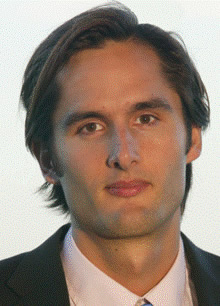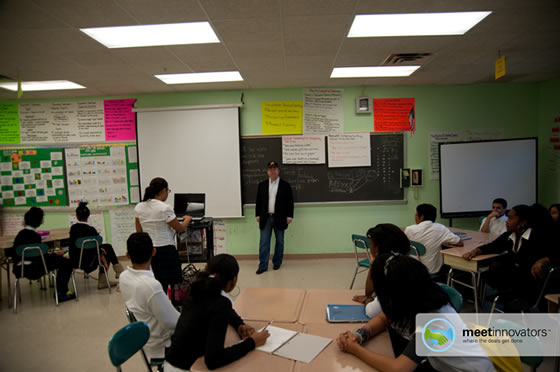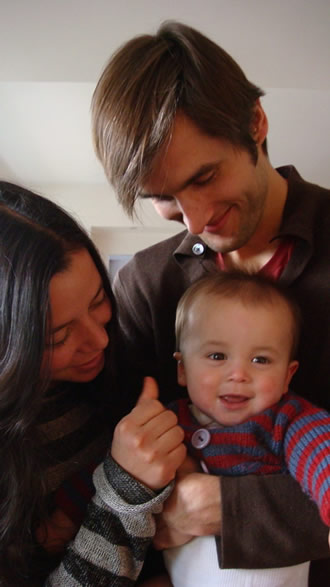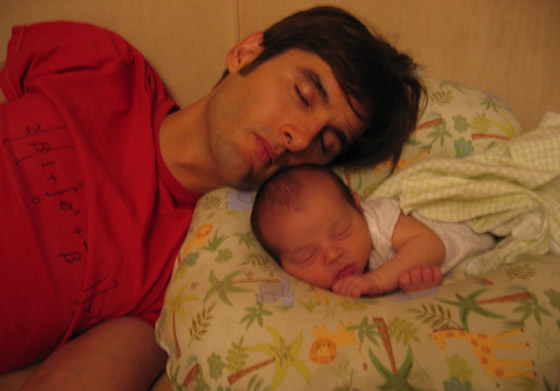
- Find Out About A Non Profit Which Has A Very Scalable Affiliate Program
- Learn How You Can Help US Schools In A Way Which Is Very Personal To You
- Why Are The Top Silicon Valley Entrepreneurs Supporting This Non Profit?
- How Much Revenue Will An Appearance On Oprah Generate?
Full Interview Audio and Transcript
Personal Info
Hobbies and Interests: Woodworking, Fishing.
Sports teams: Chivas (Mexican Soccer Team).
Favourite Books:
- Team of Rivals: The Political Genius of Abraham Lincoln by Doris Kearns Goodwin
- A Confederacy of Dunces by John Kennedy Toole
Favourite Entrepreneurs: Jeff Weiner, Tony Hsieh, Omar Hamoui (AdMob Founder), Reed Hastings.
Twitter url: http://twitter.com/charlesbest
Personal blog: http://blog.donorschoose.org
Company website: http://donorschoose.org
Fast Track Interview
Adrian Bye: I’m talking with Charles Best who runs an organization called DonorsChoose. It has a pretty interesting concept. Charles, can you tell us a little bit about who you are and what you do?
Charles Best: Yes! DonorsChoose.org is a website where public school teachers post classroom project requests, and then donors choose the classroom project they want to support. Not only do they get to pick where their money is going to go, but they get to see the impact of their donation in the form of photographs, student thank you letters and a teacher result letter from the classroom that they chose to support.
It’s a website that grew out of a high school in the Bronx where I was the history teacher for five years. It was my first year of teaching. My colleagues and I were having the same conversation over and over again in the teachers’ lunch room about books we wanted our students to read, art supplies we needed for an art project, microscopes we needed for a science experiment, a field trip we knew would really bring the subject matter to life.
 None of these ideas would go past the teachers’ lunch room because there was no source of funding. We teachers would go into our own pockets to buy basics like copy paper and pencils, but for the most part, we saw our kids going without the materials and experiences they needed to learn. As a result we had a tough time innovating.
None of these ideas would go past the teachers’ lunch room because there was no source of funding. We teachers would go into our own pockets to buy basics like copy paper and pencils, but for the most part, we saw our kids going without the materials and experiences they needed to learn. As a result we had a tough time innovating.
At the same time, I figured there were people from all walks of life who wanted to help improve our public schools but were getting more skeptical about writing a $100 check to a big institution and not knowing how their money was spent.
I figured if we could enable anybody to be a philanthropist, if we could create almost a philanthropic eBay where somebody with $10 could pick a project that really spoke to them, see exactly how their money was being spent and hear back from the people they chose to help, then my colleagues and I would be able to get our students those books and take them on that field trip.
As a result, I started DonorsChoose.org in the spring of 2000. For our first few years, we were operating under my classroom with my students as our staff members. In 2003, Oprah Winfrey did a phenomenal story about our site. That story prompted the first inquiries from other parts of the country about DonorsChoose.org expanding. Until 2004, our site was only open to public schools in New York City. Then we began to expand to other states and other cities. Only two years ago, we opened our website to every public school in America.
Adrian Bye: How did Oprah find you?
Charles Best: It was because of a piece by Jonathan Alter of Newsweek, who was the very first journalist to break the story of DonorsChoose.org. I cold-called him during my lunch hour while I was teaching. Unlike all the other reporters, he did not hang up the phone on me. We spent an hour on the phone. He wrote a column saying that he felt that one day DonorsChoose.org would change the face of philanthropy.
Adrian Bye: Can you talk about how much was brought in after you went on Oprah?
Charles Best: Yes. We took in $250,000 in donations from citizen philanthropists in just a few days following Oprah’s profile of our philanthropy. When you have a baseline of donations as small as we did, it’s very easy to isolate the impact of a highlight like that from Oprah. Of course the even greater value of Oprah’s story was that it got the ball rolling toward our national expansion.
Adrian Bye: Can you talk about how big you are today with annual revenues and how the financials work? I assume, by now, this is full-time for you and you have a team?

This is me (Adrian) presenting to a class of low income Dominican students in New York City about standing up to dictators. Having visited North Korea and Cuba and living in the Dominican Republic for many years, this was very important to me, I was very happy to be able to donate books to the kids. This was made possible by Donors Choose.
Charles Best: That’s right. For the last four years, I’ve been doing DonorsChoose.org full-time. I have 52 colleagues. Any member of the public can see our current impact if you go to DonorsChoose.org/impact. If you went to that page while we are talking, you’d see that more than $40 million has been contributed to classroom project requests on our site by about 160,000 citizen philanthropists all across the country and in a few other countries as well. It also includes 115,000 teachers in public schools, overwhelmingly in the low-income communities, who have posted project requests on our site. Through our site, 105,000 projects have come to life for 2.7 million students. This school year, we’re projecting at least $23 million in classroom project funding.
Adrian Bye: Your growth is exponential. Wow! Congratulations. That’s impressive. Are you going to turn this into eBay and then retire?
Charles Best: We’re a public charity. Although we’re a charity, we do have a business model for achieving sustainability, our equivalent to profitability. That model is based on the option every donor has when they’re supporting a classroom project. That option is to dedicate 18 percent of their gift to DonorsChoose.org‘s operating expenses. More than 90 percent of donors choose to dedicate 18 percent of their gift toward our operating expenses and operating income; this makes DonorsChoose.org more self-funding.
When we get to about $40 million to $50 million a year in classroom project funding, the donors’ inclusion of that optional operating gift will cover 100 percent of our operating expenses. At that point, if you will, we will have "broken even" as a company. Of course at that point, we won’t be generating profit, but we’ll have become that rare species of an entirely self-sustaining non-profit organization.
Adrian Bye: My understanding of the way the process works is someone goes to the site and chooses to support you through a donation. When the money comes in, you buy what is needed and ship it directly to the teacher. Is that correct?
Charles Best: That’s exactly right. Our back office operation is more akin to that of Netflix or Amazon. You identified pillar number two of our operating model. Pillar number one is that we vet and validate each teacher’s project request before posting it to the public site. Then as you said, we fulfill the project for the teacher and don’t give the teacher cash.
Finally, we provide a platform for teachers to publish notes and photographs of the project taking place. For example, a donor giving only $1 to a project at DonorsChoose.org gets a thank you note from the teacher addressed to them, a results letter, photographs of their project taking place and a cost report showing how every dollar on the project was spent. That’s all digital. Then donors who give $100 or more will also get a physical package of a handwritten student thank you letter approximately three and a half months after the project has been fully funded.
It really is this one place where with $1 or $10, you can find a project that really speaks to you. There are 20,000 live classroom project requests on our site at any given moment. That means somebody can express a personal area of interest and find projects matching that interest.
You could search for keyword "horseback riding," and you’ll find a number of projects centering on therapeutic horseback riding for disabled students. You could type in "yoga" and see a whole range of teachers who need yoga resources to teach their students yoga. It’s the ability to express a personal passion and find a project that matches that passion, to see exactly how your money is being spent and to hear from the people you helped in this really vivid, tangible way.
 I’ll share an anecdote about what happened when a writer for Fortune magazine was doing this story on Kiva, a similar organization, and DonorsChoose.org. When the writer and I were done talking, he said his personal passion was saving the salmon in the Pacific Northwest. That was what he cared about, and it was, therefore, unlikely that he’d be giving a lot of money at DonorsChoose.org because education wasn’t his passion as much as saving the salmon.
I’ll share an anecdote about what happened when a writer for Fortune magazine was doing this story on Kiva, a similar organization, and DonorsChoose.org. When the writer and I were done talking, he said his personal passion was saving the salmon in the Pacific Northwest. That was what he cared about, and it was, therefore, unlikely that he’d be giving a lot of money at DonorsChoose.org because education wasn’t his passion as much as saving the salmon.
Before he left the room, I did a keyword search for "salmon" on DonorsChoose.org and up came five classroom project requests all relating to salmon in the Northwest. The top result was a teacher on an island off of Alaska teaching in a one-room schoolhouse whose students are Native Alaskans. They had recorded their parents’ folktales about salmon and done research on salmon. They needed a printer and scanner to share that work with the outside world. The second result was an Oregon High School teacher who had created a salmon hatchery in the river flowing by his school, and he needed hip waders for his students to go in the river and maintain the hatchery.
This writer who had initially thought that DonorsChoose.org wouldn’t be his personal passion realized that his cause of saving the salmon in the Pacific Northwest absolutely could be expressed through our platform. He wound up donating to the Oregon High School teacher’s salmon project.
Adrian Bye: Cool. How did you get funding when you were getting starting?
Charles Best: It was by still living with my parents after graduating college, not having any rent to pay and being able to dedicate some of my teacher’s salary to DonorsChoose.org. Of course after a year or two of that, we had a number of funders.
Goldman Sachs Foundation was one of the very first supporters. They made an angel investment in our charity, which enabled us to move out of my classroom in the Bronx and into a real, one-room closet of an office and to build a real website.
Two and a half years ago, a group of Silicon Valley leaders formed a group to provide us with what we referred to as a round of funding. That group includes the Omidyar Network created by Pier and Pam Omidyar of eBay fame, David and Angela Filo of Yahoo! fame, Vinod Khosla, Reed Hastings the founder of Netflix and Fred Wilson and Brad Burnham at Union Square Ventures. It was charitable funding, but it was structured on some of the same principles as a venture investment.
These Silicon Valley leaders had two conditions of the funding for DonorsChoose.org. One was that we would go national and open our site to every public school in America. The second was that we would get to our break-even point. This one-time infusion of operating capital from these Silicon Valley leaders covered the gap between what donors give through that optional operating gift and our actual operating expenses.
Adrian Bye: Were you working toward break even by that point or did those guys get you to move forward more quickly on this?
Charles Best: From year one of DonorsChoose.org, we had this model of letting donors choose whether or not they wanted to support our operating expenses. As an organization, which was open only in a handful of cities and a handful of states until two and a half years ago, we had no hope of achieving the scale necessary for break even. When we went national, we now had the potential to see so many classroom projects funded that donors’ inclusion of the optional operating gift does cover all of our operating expenses, and we’re on a pretty clear path to break even.
Adrian Bye: Will you go international?
Charles Best: We actually have a board retreat this February where we’re going to think about all the expansion possibilities, which range from expanding to private schools as well as public schools, to expanding the model itself so teachers could request volunteer needs as well as cash needs, to expanding the program to other sectors within the United States such as social workers or police officers, to expanding the model to schools in other countries. It’s a huge range of possibilities.
Our strategy, thus far, is to remain laser-focused on proving our core program of serving public school kids in the United States, mainly those from low-income families. Our strategy has also been that we would not look to extend the model until break even was around the corner, if we choose even to extend the model. Thus far and for the next year, we’re airing on the side of focus and really nailing it before we look further afield.
I do want to mention that we have both incredible board members and incredible colleagues. Just to give you a flavor for some of the other folks on our board: Stephen Colbert of The Colbert Report; Bill Bradley, the former senator and presidential candidate; Jeff Weiner, the CEO of LinkedIn. They give you a flavor for the caliber of folks on our board.
Adrian Bye: Why have you gotten so much support from these types of people?
 Charles Best: We’ve been fortunate with media coverage, which inspires a good number of thought leaders to check out our website. When those people check our site, they are inspired by the classroom projects and by the dedication, the imagination and the commitment of the teachers who use our site. Our website is really a showcase of just how innovative and caring our most dedicated teachers are. That commitment and humanity inspires a lot of people to want to really get engaged with our organization.
Charles Best: We’ve been fortunate with media coverage, which inspires a good number of thought leaders to check out our website. When those people check our site, they are inspired by the classroom projects and by the dedication, the imagination and the commitment of the teachers who use our site. Our website is really a showcase of just how innovative and caring our most dedicated teachers are. That commitment and humanity inspires a lot of people to want to really get engaged with our organization.
Adrian Bye: Is there anything else you want to talk about?
Charles Best: One last thing. Given the members of your audience who are affiliate marketers, DonorsChoose.org is instrumented in Commission Junction as a potential affiliate partner. A third-party site can also use our API to feature a classroom project request fitting any set of criteria. For example, by using our API, a website about yoga might want to create a widget to pull in classroom project requests that center on yoga.
If actual donations are generated from that third-party website’s promotion of DonorsChoose.org or featuring of individual classroom project requests on our site, we’re able to make an affiliate or referral payment to that third-party site. We do it out of our operating budget, not out of the actual donations that are generated. We’re able to do 4 percent cash or 10 percent DonorsChoose.org dollars if there’s an affiliate partner who wants to get their compensation in the form of philanthropic dollars.
We’d also love to see someone create Google AdSense from DonorsChoose.org projects. In other words, targeting classroom project requests in the ad real-estate area, which are topically and geographically targeted to the content on the page. There’s so much untapped affiliate potential there right now.
DonorsChoose.org/api will give someone the tools they need to pull out classroom project requests from our site onto a third-party site and then CJ is the place to apply to be an affiliate partner. This is an experimental program, and we are happy to invest some face-to-face, handholding time in helping to get any promising affiliate partners set up and customized.
Adrian Bye: What you’re offering here is a chance for a guy to drive traffic to you and do some social good, but at the same time, they can make money?
Charles Best: That’s exactly right.









